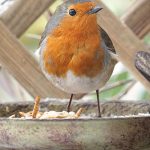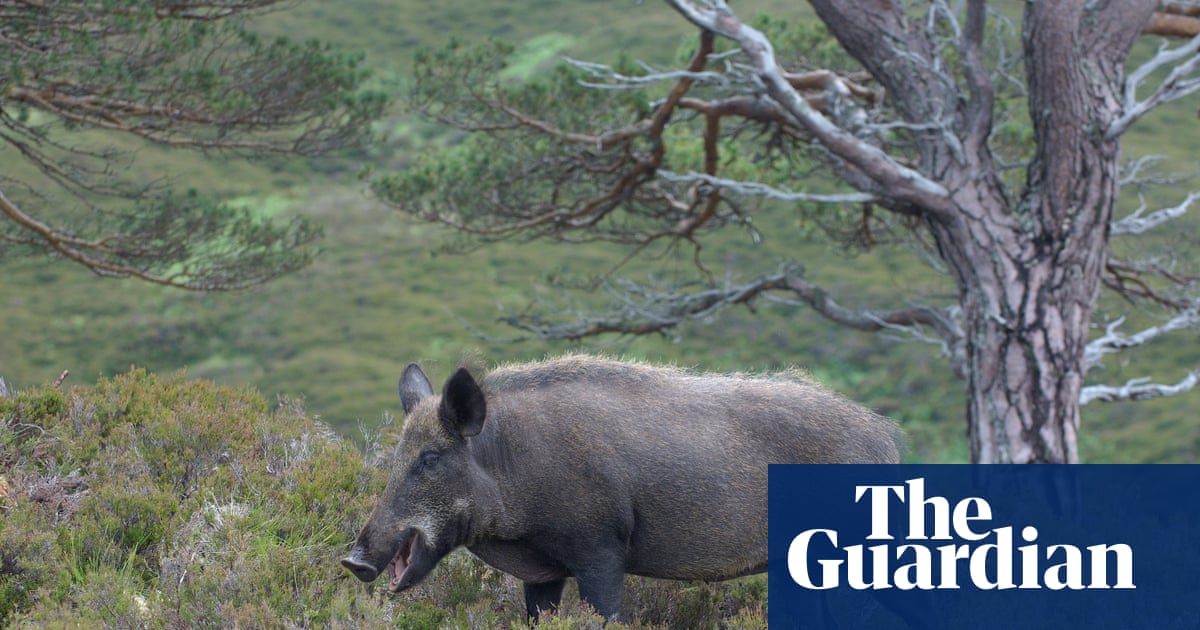A herd of feral pigs believed to have been illegally released in the Cairngorns have been successfully corralled by estate workers who are now attempting to trap them.
The animals were first spotted near the Uath Lochans area, close to the village of Inch and only 5 miles from where four lynx were illegally released last month.
The sighting of the pigs has prompted further concerns about rogue activists intent on rewilding the Highlands by stealth, with local farmers suggesting the area was becoming “a dumping ground”.
As efforts continued during the day to trap the animals, which appeared to be fairly tame, the Cairngorms national park authority said it condemned any illegal release of animals “in the strongest possible terms”.
The group of nine was corralled into a fenced-off 20-hectare (50-acre) field in the late afternoon after being lured by a trail of maize. A small team of estate and Forestry and Land Scotland (FLS) workers will now try to trap the animals.
Four Eurasian lynx were humanely captured by experts from the Royal Zoological Society of Scotland (RZSS) in early January after they were abandoned near Kingussie, where temperatures plunged as low at -14C, but one subsequently died.
The RZSS said the lynx would have been under great stress after being abandoned in the “extremely harsh” environment.
Wild boar were native to Scotland, but hunted to extinction about 700 years ago. Over the past 10 years, populations of free-roaming feral pigs numbering in the low thousands have become established in Dumfries and Galloway and the Highlands.
These include animals that have escaped from farms, as well as those illegally released into the wild, and hybrids of wild boar and domestic pigs. While not usually aggressive towards humans, a feral pig can weigh up to 100kg and may pose a risk to livestock, wildlife and farmland.
Robert MacDonald, a beef and sheep farmer on the edge of Granton on Spey and chair of the Cairngorms Crofters and Farmers Community, credited FLS for acting quickly but said that the latest illegal release raised serious concerns about “this new phenomenon” of guerilla rewilding and potential copycat incidents.
“I am concerned that the Cairngorms is now seen as a dumping ground from any wild animal. These people are on a mission, but are acting with no consultation with the local people who have to live and work in that landscape and ignorance of the animals themselves.”
Local farmers were particularly concerned about the potential for disease spread, given the unknown provenance of the animals, said MacDonald. He also said that feral pigs regularly damage fences, allowing sheep and cattle to escape, while their rooting behaviour destroys pasture, hay fields, and crops such as barley and oats, with newly planted fields being especially vulnerable.
after newsletter promotion
Scottish Land and Estates (SLE), which supports rural businesses, condemned the “reckless” release, and encouraged anyone with information to contact the police as it coordinated the trapping efforts.
Tom Cameron, Forestry and Land Scotland’s north region area wildlife manager, said the corral trapping system was “for their own welfare and because we don’t know their origin or whether there is the potential for them to spread any disease across domesticated livestock in the area”.
Cameron asked local people to stay away from the area in the meantime. “As we work to do this, we are asking anyone not involved with the operation to stay away from the area so trained staff can do their job and the animals are not unduly stressed or startled.”
The three surviving lynx remain in quarantine in Edinburgh zoo. Last week, the first minister, John Swinney, speaking at the NFU Scotland conference, ruled out the legal reintroduction of lynx.
But conservationists working on a partnership project to set up an approved programme to restore lynx in the region said there was no reason why there could not be a “carefully managed” reintroduction.












